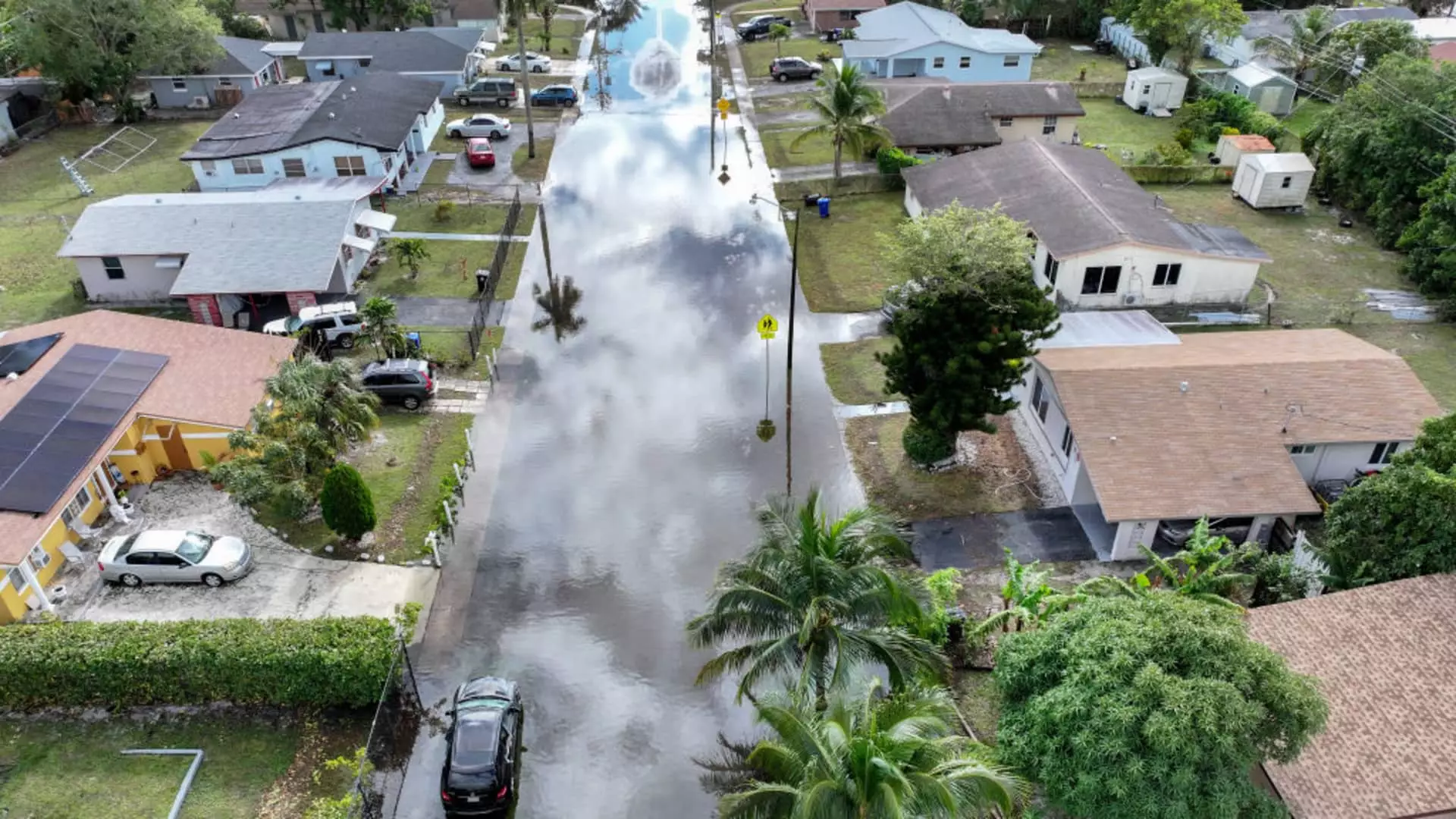As the financial landscape evolves, it’s becoming increasingly clear that climate change is not merely an environmental concern; it is a formidable adversary to economic stability. Traditionally, mortgage evaluations have leaned heavily on metrics such as income, credit scores, and collateral. However, glaring evidence now suggests that the equation is about to be rewritten to include a factor that no one anticipated—unsafe weather conditions. The intertwining of environmental risk with financial lending practices represents not just a shift in assessment protocols but also a dire warning signal about the precarious nature of our mortgage systems.
The Reality of Rising Climate Risks
Recent analyses reveal that lenders are finally waking up to the financial ramifications of climate catastrophes. First Street, a climate risk assessment firm, has put the spotlight on a staggering statistic: projected annualized climate-driven foreclosures could soar to an unimaginable $1.21 billion this year alone. That amounts to 6.7% of all foreclosure credit losses—a figure that’s disturbing in more ways than one. These aren’t merely numbers on a spreadsheet; they represent the homes, lives, and retirements of real people who could be left vulnerable due to circumstances out of their control.
The truth is that climate change is not a looming threat—it’s already here, affecting property valuations and potentially jeopardizing the livelihoods of millions. Looking ahead, a mere decade could transform this crisis from a mild tremor into an earthquake. Predictions indicate that foreclosure losses could swell to an unfathomable $5.36 billion, comprising nearly 30% of the total foreclosure losses. This progression forces us to confront the uncomfortable truth: our current mortgage structures may be woefully outdated and inadequately equipped to navigate an increasingly unstable environment.
A Ripple Effect: Insurance Implications
While the mortgage market braces itself, home insurance is simultaneously facing a crisis of its own. As climate risks escalate, we see insurers retreat from high-risk areas—an action that compounds the financial burden on homeowners and lenders alike. Coastal dwellers, in particular, have already experienced shocking spikes in premiums; a direct effect of the growing threat from storms and flooding. The First Street report emphasizes this connection, noting that exponential increases in insurance costs are often the precursor to foreclosures. When families are forced to choose between feeding their children and making exorbitant insurance payments, it inevitably leads to heart-wrenching decisions, with foreclosure looming on the horizon.
Just as alarming is the revelation that homeowners are increasingly abandoning their properties due to inflated costs. These “strategic defaults” are not only understandable but also symptomatic of a deeper systemic weakness. High-risk areas are becoming financial traps where the path to financial survival is riddled with peril, and as people walk away from their homes, lenders find themselves grappling with the fallout.
Revolutionary or Reckless? The Role of Government
With lenders and insurers caught in a vicious cycle of risk, one must question the role of governance. Institutions like FEMA have come under intense scrutiny, particularly as staffing cuts and funding shortfalls have hamstrung their ability to respond effectively to disasters. For many, the phrase “government in flux” translates to a neglect of responsibility that exacerbates the predicament in which families find themselves.
It’s vital that government entities recognize their role in providing backup resources for natural disaster recovery and housing stability. Without proactive measures, the financial repercussions could ripple throughout the economy, ultimately leading to an unnecessary economic downturn. The complexities of climate change demand not just acknowledgment but also responsiveness at every level, from local municipalities to federal organizations.
The Dire Need for Change in Underwriting Standards
If we are to adapt to this new reality, a comprehensive reevaluation of underwriting standards is essential. The time has come to integrate climate risk into mortgage assessments, assessing properties for their susceptibility to climate disasters just as we currently evaluate credit scores and income stability. Fannie Mae’s hesitance to adapt its processes is nothing short of alarming. By ignoring or delaying the necessary changes, we inadvertently perpetuate a cycle that places undue financial burden on vulnerable populations.
Climate risk is not a static figure; it evolves with each passing year, requiring a vigilant examination of the tools lenders use to evaluate potential borrowers. Hidden risks, due to lack of transparency and preparation, represent not only a threat to financial institutions’ stability but also the very homes that American families cherish.
This emerging crisis calls for immediate action, collective awareness, and a commitment to reshaping the financial landscape in a way that accommodates the realities of our changing environment. In a world replete with uncertainties, we must foster resilient lending practices that not only protect lenders’ interests but also safeguard the average homeowner’s future. The time left for mere observation has passed; now is the moment for actionable change.

Leave a Reply